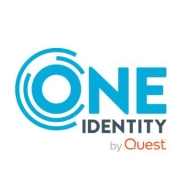

Syslog-ng and Cribl are key players in log management, serving distinct purposes with Syslog-ng leading in traditional log management and Cribl excelling in dynamic environments due to its innovative data routing and processing capabilities.
Features: Syslog-ng offers robust log extraction and storage, integration with multiple solutions for real-time monitoring, compound search capabilities, and separate config files. Cribl provides real-time data transformation, data reduction and masking, and simplified log collection from multiple sources.
Room for Improvement: Syslog-ng could enhance its SIEM capabilities and improve integration ease with modern platforms. Enhancing customer support responsiveness could also benefit users. Cribl may benefit from enhancing its cost management to match the simplification it offers in other areas, refining data routing complexity, and expanding integration support for legacy systems.
Ease of Deployment and Customer Service: Syslog-ng provides straightforward deployment, beneficial for legacy systems, with focus on technical support for existing configurations. Cribl's deployment is streamlined, especially for cloud environments, with proactive customer support reducing deployment friction, offering a modern edge.
Pricing and ROI: Syslog-ng offers predictable pricing beneficial for traditional infrastructures. Cribl's value-based pricing aligns with its innovative features, leading to higher initial costs but providing substantial ROI through advanced capabilities, attractive for modernization-focused environments.


Cribl optimizes log collection, data processing, and migration to Splunk Cloud, ensuring efficient data ingestion and management for improved operational efficiency.
Cribl offers seamless log collection directly from cloud sources, allowing users to visually extract necessary data and replay specific events for in-depth analysis. It provides robust management of events, parsing, and enrichment of data, along with effective log size reduction. Cribl is particularly beneficial for migrating enterprise logs, optimizing usage, and reducing costs while streamlining the transition between different log management tools.
What are Cribl's most important features?
What benefits and ROI should users look for?
Cribl is widely implemented in industries requiring extensive data management, such as technology and finance. Users leverage Cribl to handle log collection, processing, and migration efficiently, ensuring smooth operation and effective data analysis. It aids in managing temporary data storage during downtimes and better handling historical data, preventing data loss and allowing extended periods for viewing statistics and monitoring trends.
Optimizing SIEM
syslog-ng is the log management solution that improves the performance of your SIEM solution by reducing the amount and improving the quality of data feeding your SIEM.
Rapid search and troubleshooting
With syslog-ng Store Box, you can find the answer. Search billions of logs in seconds using full text queries with Boolean operators to pinpoint critical logs.
Meeting compliance requirements
syslog-ng Store Box provides secure, tamper-proof storage and custom reporting to demonstrate compliance.
Big data ingestion
syslog-ng can deliver data from a wide variety of sources to Hadoop, Elasticsearch, MongoDB, and Kafka as well as many others.
Universal log collection and routing
syslog-ng flexibly routes log data from X sources to Y destinations. Instead of deploying multiple agents on hosts, organizations can unify their log data collection and management.
Secure data archive
syslog-ng Store Box provides automated archiving, tamper-proof encrypted storage, granular access controls to protect log data. The largest appliance can store up to 10TB of raw logs.
We monitor all Log Management reviews to prevent fraudulent reviews and keep review quality high. We do not post reviews by company employees or direct competitors. We validate each review for authenticity via cross-reference with LinkedIn, and personal follow-up with the reviewer when necessary.